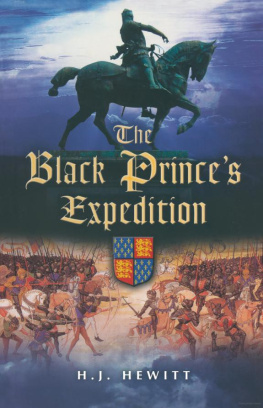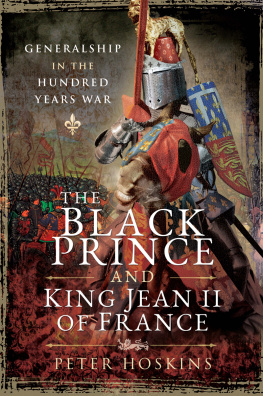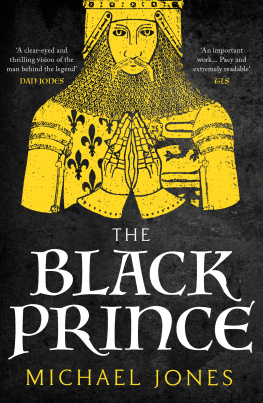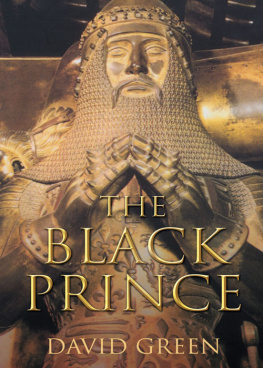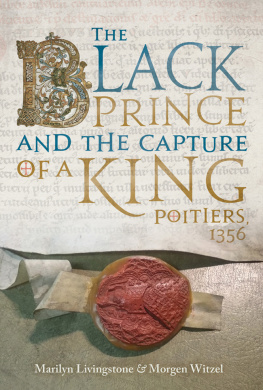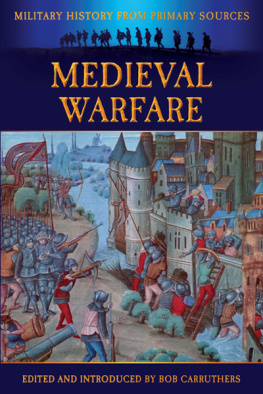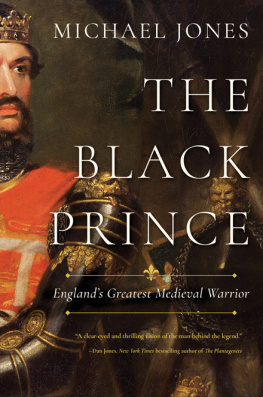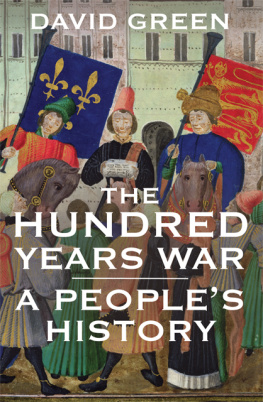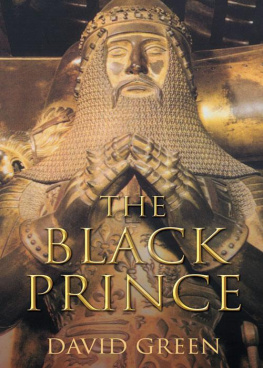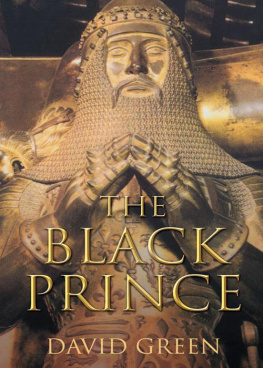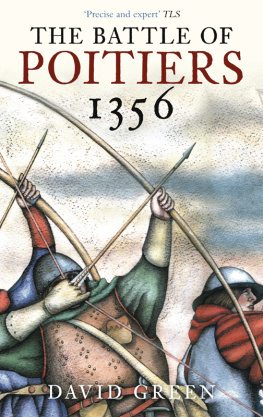THE BLACK PRINCES EXPEDITION
OF 13551357
THE BLACK PRINCES
EXPEDITION
OF
13551357
H.J.HEWITT
Pen & Sword
First published in Great Britain in 1958 by Manchester University Press
Published in 2004 in this format by
PEN & SWORD MILITARY
an imprint of
Pen & Sword Books Limited, 47 Church Street
Barnsley, South Yorkshire S70 2AS
Copyright H.J. Hewitt 1958
ISBN 1 84415 217 0
The right of H.J. Hewitt to be identified as Author of the Work
has been asserted by him in accordance with the Copyright, Designs and
Patents Act 1988.
A CIP catalogue record for this book
is available from the British Library.
All rights reserved. No part of this book may be reproduced or
transmitted in any form or by any means, electronic or mechanical
including photocopying, recording or by any information storage
and retrieval system, without permission from the Publisher in writing.
Printed and bound in Great Britain by
CPI UK
Pen & Sword Books Ltd incorporates the imprints of
Pen & Sword Aviation, Pen & Sword Maritime, Pen & Sword Military,
Wharncliffe Local History, Pen & Sword Select,
Pen & Sword Military Classics and Leo Cooper.
For a complete list of Pen & Sword titles please contact:
PEN & SWORD BOOKS LIMITED
47 Church Street, Barnsley, South Yorkshire, S70 2AS, England.
E-mail: enquiries@pen-and-sword.co.uk
Website: www.pen-and-sword.co.uk
CONTENTS
The end of the truce Guienne The prince Warfare in the
fourteenth century. |
Three expeditions The princes troops The magnates troops
The force The prince Plans and arrangements The arms
The horses The ships. |
Communications with England Personal relations Bordeaux:
rest and payments Guienne: military operations England:
reinforcements France: King John and his tasks. |
The ftrst phase The turning point Before the battle The battle:
movements, morale, men Return to base The news. |
At Bordeaux Negotiations: the truce Return to England
Negotiations: the peace. |
APPENDICES |
MAPS |
I N preparing the following pages, I have not sought to make a contribution to the history of the Art of War. That would have restricted my work to ground already well covered. Nor have I tried to fill gaps in the work of Oman, Longman, Mackinnon, Tout, Belloc, Denifle, Molinier, Delachenal, Lot. For those writers the expedition of 1355-7 was but one episode in the complex history of the fourteenth century and they necessarily chose for treatment only those aspects which were relevant to their themes. Indeed they dealt with little more than campaigning and, in so far as the purpose of the expedition was the advancement of the Plantagenet cause, its means military pressure exerted on the subjects of the French king and its method destruction, a study of the campaigns may appear sufficient to relate the expedition to the course of national history. Yet the expeditionary force included men who had been chosen, armed, clothed, paid, assembled, transported, reinforcedas well as led on the march and in battle. It contained men who were interested in getting loot and prisoners as well as in fighting. It had moreover to be brought back to England with its important captives. To these aspects little or no attention has been given. Nor have writers dealt with the Cheshire archers, the shipping for the two sea journeys, the awards for service, and the fact that statecraft as well as force of arms was to be used.
There is room, therefore, for a more comprehensive account of the expedition than has yet appeared. In attempting to present such an account, I have felt that the purely military and political aspects, though important, need no emphasis; that the best service one could give to the reader was to try to present the expedition in the round so that he might see the body of men sent out, their diverse origins and motives, their experiences and rewards as well as their feats of arms.
Three circumstances have determined the shape of the work here presented. First, of course, come the nature and quantity of the evidence available for study. Next, though I desired to be fairly comprehensive, I have omitted a formal consideration of the financial aspect of the expedition for two reasons: it is inextricably bound up with the general finance of the war; it is also the subject of specialist study now well advanced. But the most important factor has had to be my own judgment of what was necessary to give some kind of unity to the work and proportion to its parts.
So much has been written about the battle of Poitiers that I would have preferred to avoid treating it at all. To have done so, however, would have robbed the expedition of its chief glory and impaired the unity I sought. I have, therefore, followed my general principle: the fighting has its due place, but there are other aspects of the battle and to these also I have given some attention.
I regret that it has not been possible to do justice to two groups of men, namely the Gascons and the Welsh. The former suggested the expedition, sincerely welcomed it, aided it in both campaigns and at the battle of Poitiers; and their leaders were both active and resourceful. An assessment of their importance must, however, rest in part on the number of men they contributed and for that, unfortunately, there is no evidence. As regards the men of North Wales, again the evidence is disappointing. A mere fragment of the Black Princes Register for that region has survived. If we had the sections for the years 1357 and 1358, it is likely that we should find entries of honourable mention and interesting rewards comparable with those given to the Cheshire men.
I have searched French libraries for the work of learned societies and local historians and have had the privilege of meeting the archivists, departmental and city, at Toulouse, Bordeaux and Poitiers. I have also corresponded with the archivists in several other French towns. Broadly it may be said that French archives, national and local, contain little material relevant to this study; and that Delachenal, Moisant, Molinier and Breuils have utilized most of the matter which is of French origin. A few French studies have cleared up obscurities in the chroniclers accounts of the princes route through Languedoc.
However unreliable Froissart may be in points of detail, he is indispensable for his picture of the age. His Chronicles have therefore been useddiscriminatingly, I hopeand, generally, where it seemed helpful to quote his words, I have felt that the Globe edition of Lord Berners translation served my purpose better than a rendering into modern English.
It is not possible to do for the campaigns of 1355 and 1356 what Wrottesley did for that of Crcy, but the Nominal Roll (century. Though for the sake of conciseness, only a single reference is quoted, many of the names may be followed in the indexes of the Black Princes Register and the Calendar of Patent Rolls and in other parts of Henxteworths journal.
The attempt to depict a medieval expedition in the round has compelled me to venture into administration, arms, diplomacy, finance, geography, law, shipping, topography and several other fields cultivated by specialists. To have escaped all errors in so wide a study is more than one can expect. Comprehensiveness is not attained without risks.

